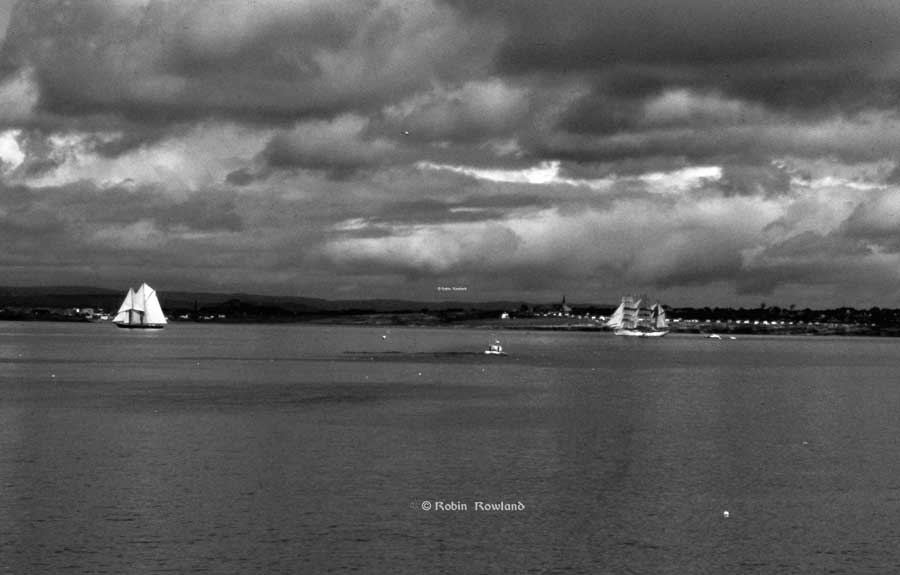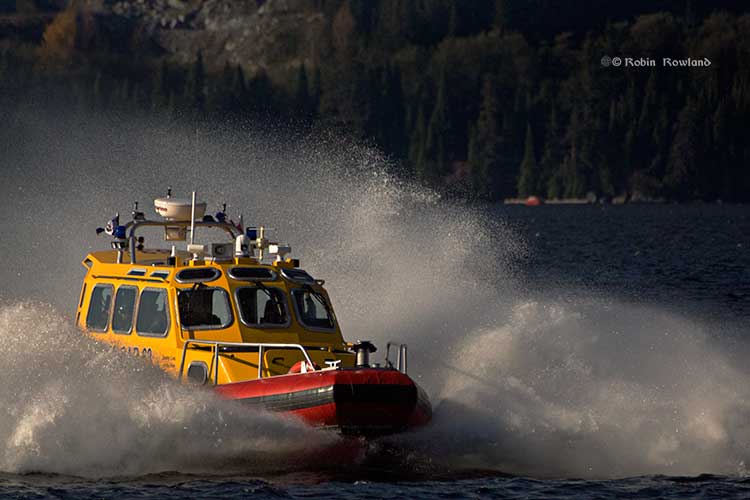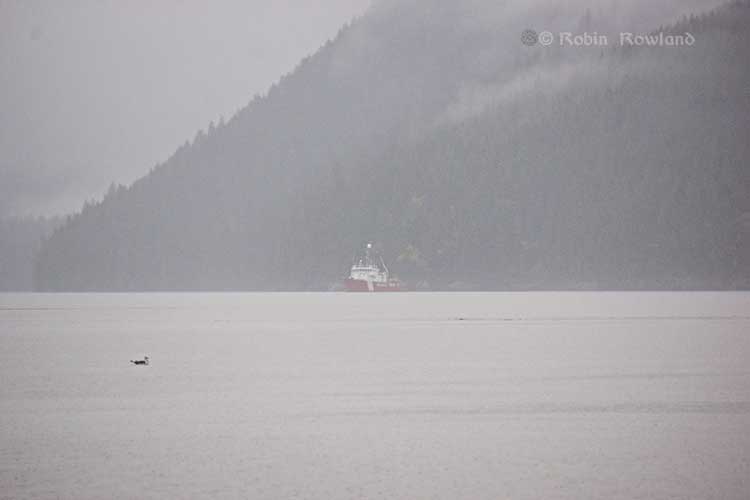This is one of the my favourite photographs. The Bluenose II sailing off Sydney, Nova Scotia, on July 11, 1984, thirty-one years ago today. I like it because the Bluenose hasn’t set the ships tops’ls and that’s something that you don’t see that often at least in most photographs After a controversial $19.5 million refit, […]
Category: Coast Guard
Kitimat christens new SAR 63 rescue vessel, Snowflake Responder III
October 25, 2014
Kitimat’s Royal Canadian Marine Search and Rescue Station 63 (SAR 63) christening its new enclosed rescue vessel on Saturday, October 25, 2014 at MK Bay marina. Almost all the more than $600,000 need for the state-of-the-art rigid hull inflatable Type II Falkins Class dedicated rescue boat was raised locally by the Kitimat Marine Rescue Society […]
The CCGS Gordon Reid, a Canadian Coast Guard offshore patrol vessel, is seen on a stormy, wet and windy Douglas Channel, off Coste Island, south of Kitimat, on Sunday, Oct. 5, 2014. The Gordon Reid is currently (as of 2200 Oct 17, 2014) towing the Russian container vessel Simushir which lost power off the coast […]


